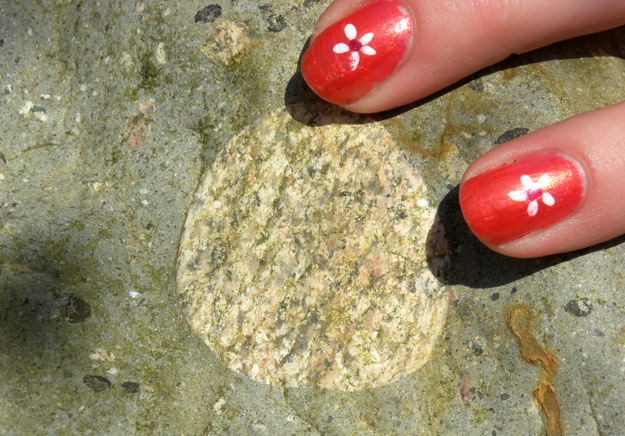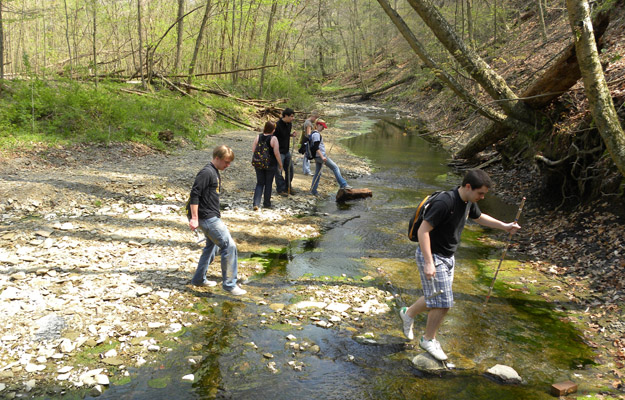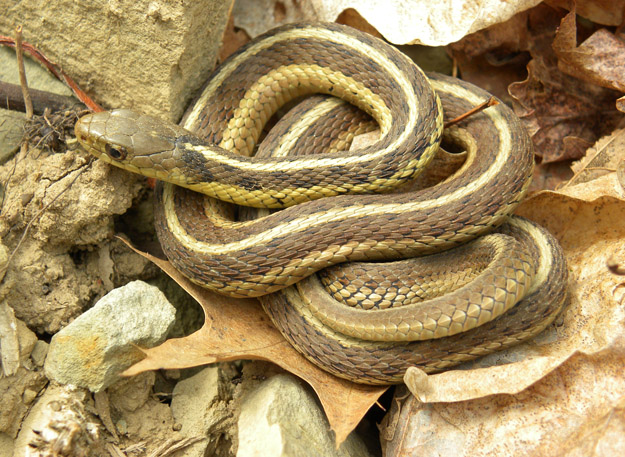
The College of Wooster 2010 Sedimentology & Stratigraphy class in Spangler Park near Wooster, Ohio. Small classes are such a delight!
WOOSTER, OHIO–I let my Sedimentology & Stratigraphy class talk me into an afternoon field trip to Spangler (or Wooster Memorial) Park just west of town. It was a perfect day of sunshine and cool breezes. While I made plans to measure sections and do other formal geological work, we ended up just enjoying the creek, birds, flowers, rocks, fossils, trees and other delights of Ohio in the spring. We could not have found a better way to celebrate Earth Day.

With the fancy nails of Megan Innis for scale, this is a granitic dropstone in a greenstone known as the Gowganda Tillite. In one of those wonderful geological twists, this rock is a glacial deposit formed in Ontario, Canada, 1.8 billion years ago. It was much later carried to Ohio by a Pleistocene glacier. The dropstone is thus at least twice-removed by ice from its original source.





Looks like a great day–sunshine, rocks and snakes–what more could you ask for?
Regarding your second photo, I wonder if “dropstone” is the right term in this case? My understanding of “dropstone” (at least of the glacial variety) is that it’s a stone, carried on or embedded in a raft of ice, that then drops (hence the name) into finer, stratified muds/silts/sands on a lake or sea bottom when the ice melts.
From what I can see in the photo, you’ve got a round granite pebble amid an extremely poorly sorted and apparently unstratified matrix: green mud, sand, granules and pebbles all mixed together willy-nilly–typical of glacial till (as you say, “Gowganda Tillite”). How about “erratic” or “till clast”?
Regards,
–Howard (Calgary, Canada)
Hello Howard from Canada! I love it when we get comments on our posts, and I like the symmetry of a Canadian asking about an expatriate Canadian rock whiling away its time in an Ohio gorge.
The photo of that Gowganda Tillite is a bit misleading when it comes to examining the matrix because there are drops and spatters of tree sap and other debris making it look more diverse than it really is. The matrix is almost entirely clay. We know this in part from polished specimens we have in our labs. The granitic stones really are then surrounded by mud which is marine in origin. The granitic stones still fit the definition of dropstones you described, even if the mud shows no stratification (at least on a boulder scale).
Thanks for asking. I hope you continue to visit our blog.